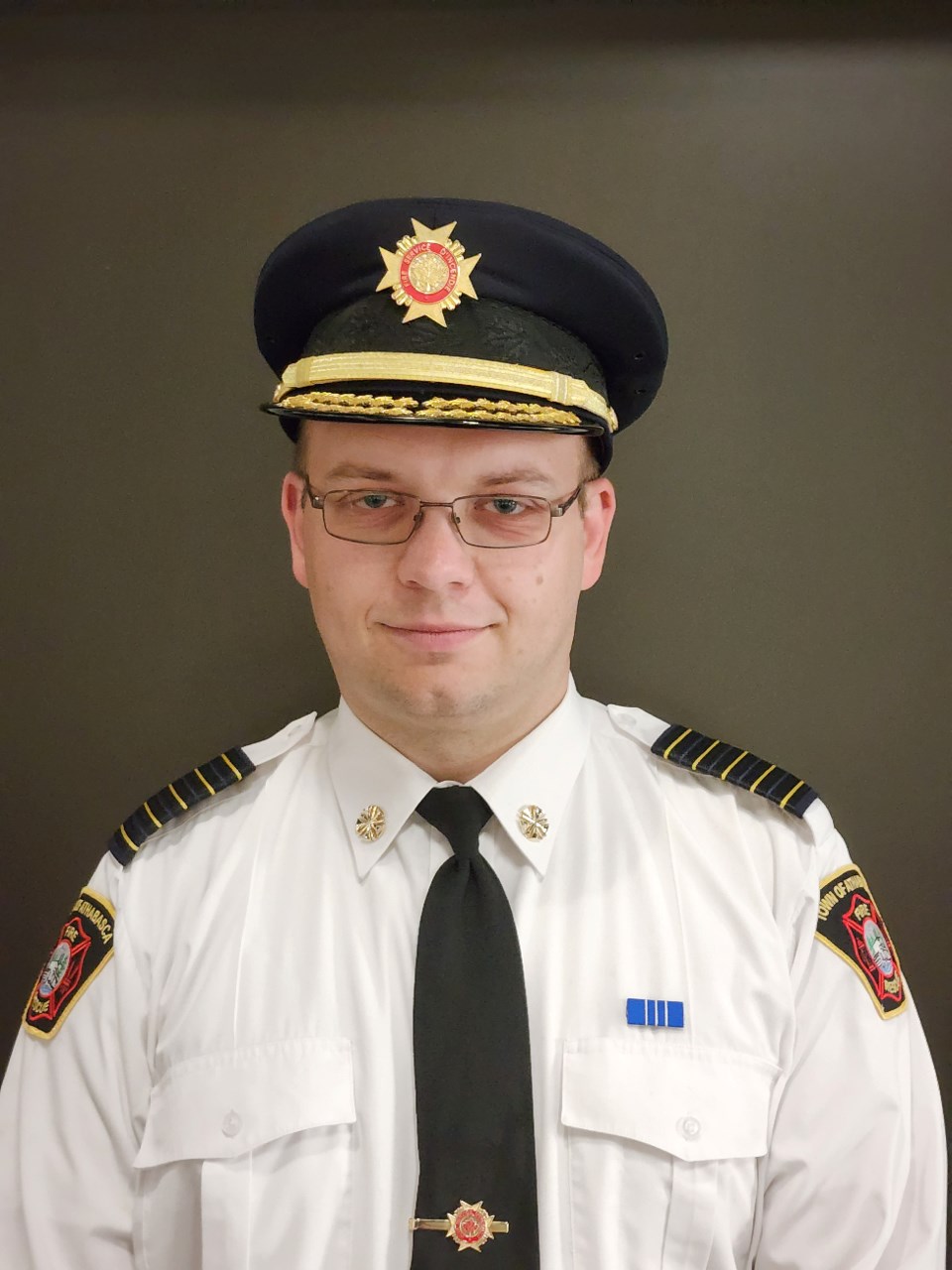ATHABASCA - You should be aware of the potential hazards in and around your home at all times of the year, but with the seasons changing fast, Athabasca Fire Department chief Travis Shalapay is reminding residents around the region to be especially vigilant when it comes to their carbon monoxide (CO) detectors and alarms throughout the winter, and the appliances that could produce the dangerous gas.
“In a nutshell, carbon monoxide is a byproduct of incomplete combustion, so, anything that creates a fire — furnaces; if you have a gas top range; there are some folks out there that have natural gas dryers and hot water tanks — all those create carbon monoxide,” Shalapay said over the phone in an Oct. 20 interview.
Regular maintenance is key to making sure all that machinery is in proper working order, including the alarm that may one day save your family’s lives, and while there are usually only a handful of instances where local fire departments respond to CO alarms during the year, inhaling too much of the gas can be fatally toxic. So far in 2022, firefighters have responded to five CO calls, two of which were significant, said Shalapay. Two others in December 2021 also involved dangerous levels of the gas.
Carbon monoxide is harmful when breathed because it displaces oxygen in the blood and deprives the heart, brain and other vital organs of oxygen. Large amounts of CO can cause you to lose consciousness and suffocate in minutes. Symptoms like headaches, dizziness, weakness, vomiting, chest pain, and confusion, all of which are easily confused with other illnesses, may not become apparent until excessive levels are reached.
“Everything around us is designed to be safe; furnaces have multiple safety sensors; if for some reason the power goes out, this furnace shuts down. Sometimes what happens is they are operating as intended, just not efficiently, but if we don’t maintain, whether it’s the safety sensors or the furnace vents there is potential for that gas to funnel its way back into the occupied space of that house, and that’s where we really start seeing the risky situations where we start seeing CO,” said Shalapay.
Older equipment can still function well if properly maintained, he added.
If you don’t already have a CO detector, Shalapay strongly recommends an immediate investment to bring at least one into your home.
“If people don't have a carbon monoxide detector, my recommendation is getting a carbon monoxide detector because without it you're not going to know you're being poisoned until it's too late,” he said, noting in his own home he has one installed near the furnace, and then another in the vicinity of the upstairs bedrooms.
“The bedrooms have a second detector, because when that furnace is running and it's blowing through the ducts with that nice warm air, I want to know if something's going on well before it becomes dangerous for me and my family.”
It’s not just the indoor risks residents should be aware of, as at this time of year, people tend to leave their vehicles running and exhaust fumes can easily enter any enclosed space, like a home, garage, shop, or the inside of the vehicle itself.
Chimneys and wood burning stoves can also lead to serious problems for residents, as they get fired up for the fall and long winter, but even regular maintenance here can save lives and avoid severe damage, said Shalapay.
“Every year we attend a chimney fire and generally speaking if they’re installed correctly and cleaned, you will not have a problem, but if you’re unfortunate enough to have it installed improperly, there’s really 101 things that can go wrong,” he said, adding that creosote build-up is another issue that requires with regular attention.
If your chimney does catch fire, Shalapay says the best course of action is to close the air dampers to prevent the flow of air from assisting the fire gaining strength, call 911 to alert the fire department, and avoid the urge resort to heroic measures that may result in an injury of your own.
“So many folks have been injured trying to put the fire out on their own,” he added, citing several incidents where residents were seriously injured after falling off their roof trying to extinguish a chimney fire.
On the subject of the impending seasonal change, Shalapay also reminds motorists to be mindful of the conditions every time you’re on the road, and to be aware of the wildlife.
“We're in the fall season and we have wildlife moving as well. We're going to start seeing subzero temperatures … most of us have grown up and lived in northern Alberta our entire lives, so we know what winter brings, but sometimes we just need to remind each other that it's time to start slowing down and planning ahead to give yourself a little more time,” he added.
Vehicle collisions always increase at this time of year, not only because of wildlife, but because motorists don’t drive to the conditions, are driving more hours in the dark, or may have gotten buzzed before they had to drive.
“Unfortunately, some folks still make that choice to partake and then try to travel home, but when you get a visit from us and the RCMP and EMS, it’s not a good day for anybody,” he said.



